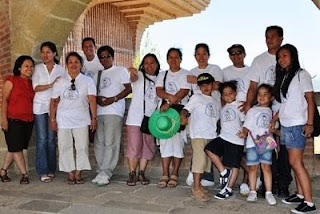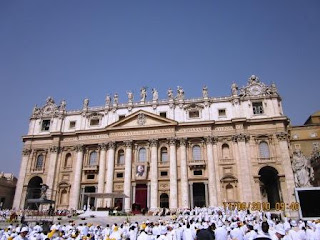In the first part, we have said that only in marriage can sexual activity be truly an expression of true love between man and woman because the institution of marriage assures two characteristics of true love: exclusivity and being forever. Hence, our thesis is that if one truly loves his/her GF/BF, he/she should wait until marriage before indulging in sexual activities.
-- But scarcely anyone is convinced about this truth today, you may object. Almost everybody believes that there’s nothing wrong with indulging in premarital sex for as long as it is safe (By safe sex, many understand it to mean safe from sexually transmitted diseases and safe from unwanted pregnancies). It is the “in-thing” today among adolescents. Besides, as you, Father, have said (in the first part), “adolescents and young adults really fall in love and that true love really occurs among young people”. You seem to contradict yourself. If true love can really occur in young people, why can’t they indulge into pre-marital sex? Again the question: “If I truly love my girlfriend, why can’t I make love with her?”
This objection seems to fall into a fallacy called “appeal to common practice”. The mere fact that most young people believe that premarital sex is morally acceptable (and are into it) does not make it morally justified. And there’s no necessity that you, young adult, should indulge into premarital sex to be accepted in your circle of friends. Neither is it necessary for you to do it to prove that your love to your GF or BF is true.
I said that true love can really occur to young people. But I did not say that true love should always be expressed in sexual activity. Instead, my position is that only within marriage can sexual activity be a true expression of love – authentic love. But what is true love? Again, we need to appeal to Pope Benedict XVI’s concept of true love as eros and agape.
We have noted previously that love, in the first place, is eros, that dimension which involves “intoxication” or “overpowering of reason by divine madness” through which man rises to the experience of the divine (the Greeks call it “ecstasy”). We commonly understand it as “falling in love”. This dimension requires ascent and purification so as not to reduce it to “pure sex”. The Pope says: “True, eros tends to rise ‘in ecstasy’ towards the Divine, to lead us beyond ourselves; yet for this very reason it calls for a path of ascent, renunciation, purification and healing” (DCE, 5).
What does this purification of the eros consist of? “How might love be experienced so that it can fully realize its human and divine promise?” the Pope asks.
The Pope appeals to the biblical expression of love as ahabà, (Cfr. Song of Songs), the Hebrew word for the Greek term agape, which connotes “the experience of a love which involves a real discovery of the other, moving beyond the selfish character that prevailed earlier (in the eros). Love now becomes concern and care for the other. No longer is it self-seeking, a sinking in the intoxication of happiness; instead it seeks the good of the beloved: it becomes renunciation and it is ready, and even willing, for sacrifice” (DCE, 6).
To purify and to discipline the eros, one needs renunciation and sacrifice. For the good of the beloved, one must renounce his/her self-seeking desire for sexual satisfaction. True love seeks the good of the beloved, says St. Thomas Aquinas. It consists not only in the self-seeking eros, but also in the self-giving agape. True love is eros turned agape.
“It is part of love's growth towards higher levels and inward purification that it now seeks to become definitive, and it does so in a twofold sense: both in the sense of exclusivity (this particular person alone) and in the sense of being ‘forever’,” the Pope noted. What he is saying is that love becomes true when it is definite (meaning, exclusive and forever). As we have noted earlier, these characteristics are guaranteed only in marriage. Hence, when one abstains from premarital sex and waits until marriage, one is truly in love.
One last point, the transformation of eros to agape involves not only a continuous seeking for the good of the beloved but also a “real discovery of the other”. When young lovers indulge themselves into premarital sex, the effort to really discover the person of the other becomes obscured because the attention now is focused on the seeking of pleasure. The other person becomes interesting for the other not anymore as the person that she or he is, but as a sexual partner. One would seek the company of the other not so much to discover the other’s personality – character, ideals, thoughts, etc. – as to experience once again the erotic pleasure that was experienced the other day.
If you really love your GF (or BF), you would really want to know her/him more. And knowing him/her more, you will love him/her more. That’s a continuous cycle until you decide to spend your lifetime with him/her in marriage. Premarital sex could endanger this “knowing-loving” dynamism.
Do you realize now why you mustn’t “make love” (I hate to use this term) to your GF even if you claim you are truly in love with her?


















